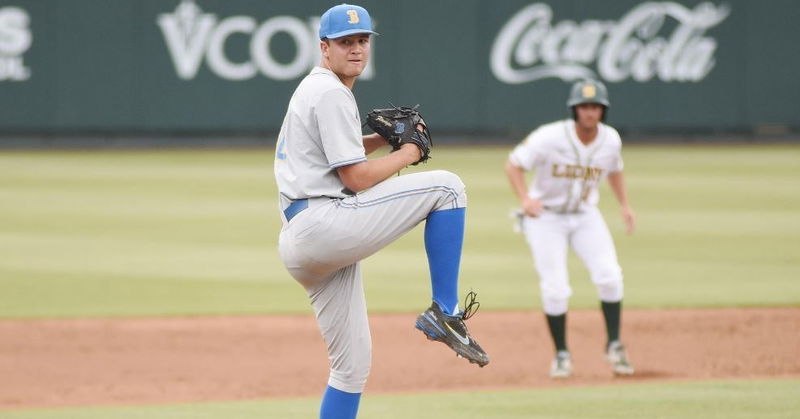
Getting to Know: Cubs 17th Rounder Ethan Flanagan |
Two things will stand out when you have time to sit back and digest the 2023 Chicago Cubs MLB draft class. For starters, this was the most college-heavy class Jed Hoyer has ever put together, as that appeared to be his focus from day one.
Second, the Cubs added a nice blend of OF, IF, and pitching talent, but once again, pitching seemed to be the focus, especially in the later rounds. Anytime you go with pitching on day three, the decision is made as more of a depth play as opposed to high-upside guys. Sometimes that depth works in your favor, and sometimes it doesn't, but one thing Hoyer has done well since taking over the team is adding depth that often contributes. That will be the goal for the Cubs 17th-round pick Ethan Flanagan, as he will now arrive at their facility in Mesa to begin his professional career. The 6-3 205-pound California native is another one of the big arms that Hoyer loves to target and just completed his collegiate career with the UCLA Bruins before being drafted by the Cubs on day three. Any time you are drafted that late but still manage to receive a 150K contract at the time of the signing, there is a lot of belief in the organization that you could be a piece moving forward. Flanagan won a state championship in high school before becoming a very good reliever for the Bruins as a freshman, where he posted a 3.28 ERA across 60 innings pitched. That performance earned him an invite to the U-19 USA national roster, where he had a great experience. Once the 2023 season began, Flanagan transitioned from reliever to starter, and it didn't go as well as he would have liked. Granted, he did post a 10% walk rate and 21 % strikeout rate across 31 innings, but his 5.12 ERA is less than appealing. He also didn't start pitching until April after dealing with forearm tightness early in the season, and he has a long history of arm issues going back to a Tommy John surgery he had in high school. The injury history alone has to be concerning for some fans, but the Cubs are still willing to take a chance on him, hoping he can stay healthy. When on the mound, Flanagan typically sits in the 89-91 MPH range with his fastball, as he is not one of those guys who will overpower you. He saw his velocity peak at 94 MPH when he was in a relief role, so there is more behind that heater than what he showed as a starter last year. Flanagan has a changeup of around 80 mph along with that fastball, which is his most-used secondary offering. He has the best feel for that pitch right now, but he has both a slow curveball in the low 70s and a slider in the low 80s. Flanagan could be a polarizing player given his medical history and the fact that he has just 92 total innings under his belt with UCLA, but most scouts are intrigued with his stuff from the left side. As a draft-eligible sophomore, Flanagan was expected to be a tough sign for the Cubs and their front office, but they gave him an offer he liked and elected to sign with them anyway. While there have been moments of greatness, his pitching history is filled with injuries, including Tommy John during his Prep days. Those injuries have limited him to less than 100 innings, and he is coming off a season where he walked 16 and struck out 31 across 31 2/3 innings. When Flanagan does pitch, however, you can see a lot of promise there. While typically a guy who sits in the low 90s with his heater, Flanagan has touched 94 in the past, and there could be more beyond that with better health and more practice on the mound. What’s most impressive about his fastball is the spin rate and the vertical break, which the Cubs have been hunting for in recent drafts. Velocity aside, the spin rate on his fastball makes it look faster than it is and can offset a hitter's timing at the plate.






